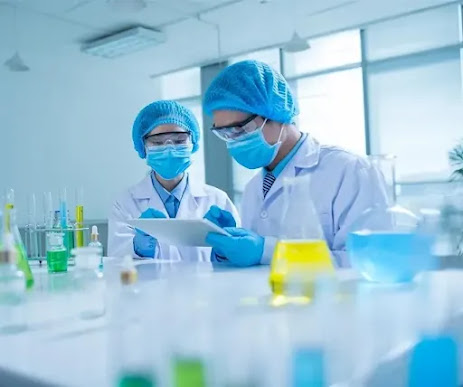Essential Safety Features to Consider When Choosing Laboratory Furniture
Laboratories are dynamic environments where scientific research, experimentation, and analysis take place. Ensuring the safety of both researchers and the experiments themselves is of paramount importance. One crucial aspect of laboratory safety is the selection of appropriate furniture. Laboratory furniture not only provides functionality but also plays a significant role in preventing accidents, containing spills, and promoting efficient workflow. In this blog post, we'll explore the essential safety features to consider when choosing laboratory furniture.
1. Chemical Resistance:
Laboratory work often involves the use of various chemicals that can be corrosive or reactive. Opt for furniture made from materials such as epoxy resin, stainless steel, or phenolic resin that are highly resistant to chemical damage. These materials will withstand exposure to spills and splashes, reducing the risk of deterioration and contamination.
2. Fire Resistance:
Safety is heightened when laboratory furniture is made from fire-resistant materials. Metal furniture, in particular, offers good fire resistance, making it a suitable choice for environments where flammable materials are used. Additionally, furniture that adheres to fire safety standards such as UL-94 can provide an extra layer of protection.
3. Ergonomics:
Promoting ergonomic design in laboratory furniture is essential to prevent strain and discomfort for researchers during long hours of work. Adjustable chairs and workstations can be tailored to each individual's needs, reducing the likelihood of repetitive strain injuries and musculoskeletal disorders.
4. Ventilation and Fume Control:
For laboratories working with hazardous chemicals or producing noxious fumes, proper ventilation and fume extraction are imperative. Furniture designed to accommodate fume hoods and other ventilation systems ensures that harmful substances are promptly and effectively removed from the workspace.
5. Spill Containment:
Accidental spills can pose serious risks in a laboratory setting. Furniture equipped with spill containment features, such as integrated spill trays or lips around work surfaces, helps prevent liquids from spreading, minimizing the risk of accidents and contamination.
6. Mobility and Stability:
Laboratories are often dynamic environments where rearranging equipment and workstations is common. Choose furniture with sturdy construction and, if needed, wheels for easy mobility. Lockable casters can prevent unexpected movement and enhance stability during experiments.
7. Durability and Cleanability:
Laboratory furniture should be easy to clean and maintain. Smooth surfaces without seams or joints minimize the accumulation of dirt and contaminants. Durable materials ensure the furniture remains in good condition even after repeated cleaning and sterilization processes.
8. Electrical Safety:
In laboratories where electrical equipment is used, look for furniture that includes features like built-in cable management systems and electrical outlets. These features prevent tripping hazards and provide a safe environment for using electrical devices.
9. Radiation Shielding (if applicable):
For laboratories working with radiation sources, furniture with built-in radiation shielding can protect researchers from unnecessary exposure. Proper shielding materials and construction techniques are crucial in maintaining a safe workspace.
10. Modularity and Flexibility:
Laboratory needs can change over time, so consider furniture that allows for modularity and adaptability. Furniture systems that can be easily reconfigured to accommodate new equipment or changing workflows ensure a safer and more efficient laboratory environment.
In conclusion, choosing the right laboratory furniture in UAE is a critical step in establishing a safe and productive workspace. Prioritizing features such as chemical resistance, fire resistance, ergonomics, ventilation, spill containment, mobility, durability, and electrical safety can significantly enhance the overall safety of your laboratory. By investing in high-quality, safety-focused furniture, you're taking a proactive approach to safeguarding both your researchers and the valuable work they undertake.




Comments
Post a Comment